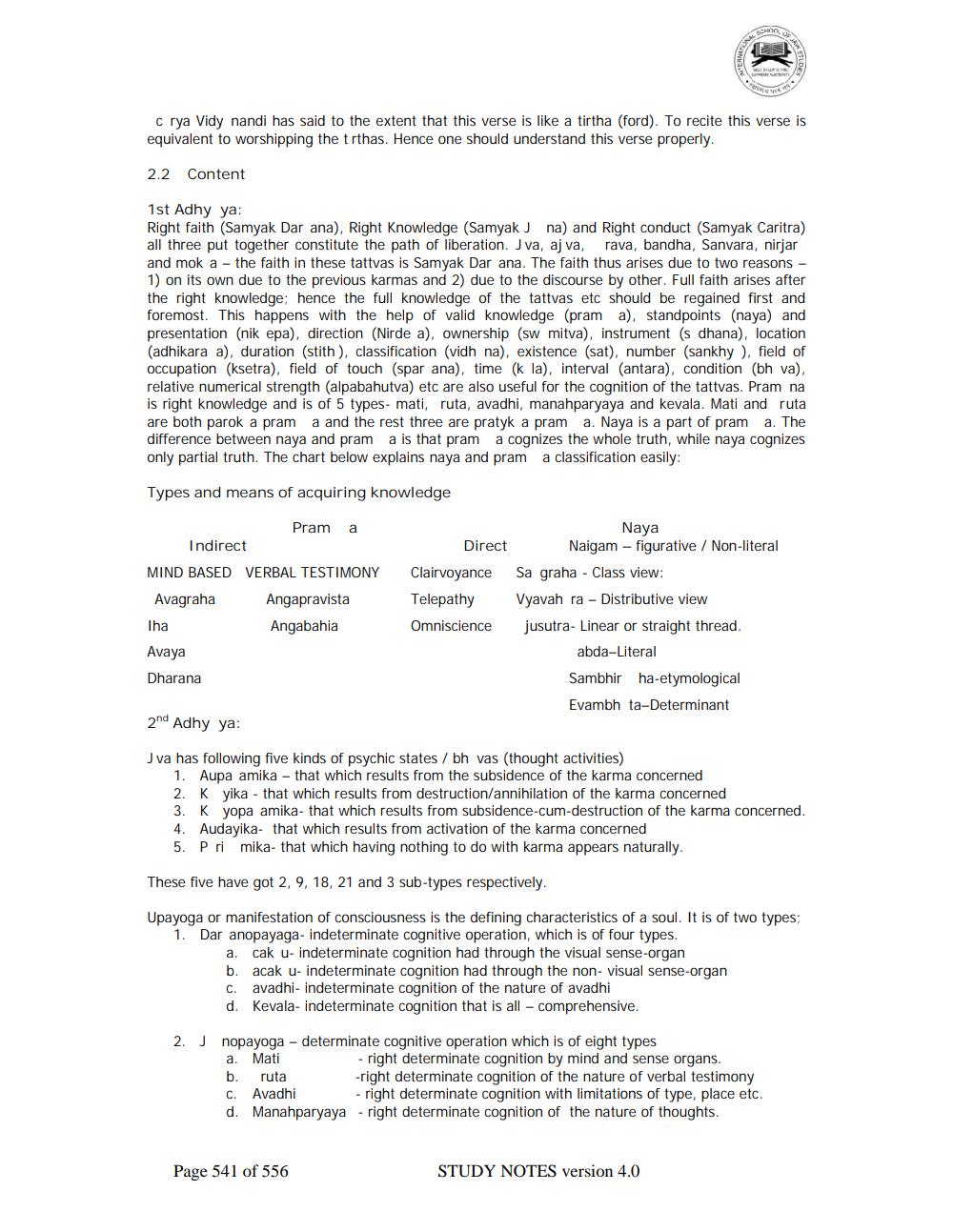________________
crya Vidy nandi has said to the extent that this verse is like a tirtha (ford). To recite this verse is equivalent to worshipping the t rthas. Hence one should understand this verse properly.
2.2 Content
1st Adhy ya:
Right faith (Samyak Dar ana), Right Knowledge (Samyak J na) and Right conduct (Samyak Caritra) all three put together constitute the path of liberation. Jva, aj va, rava, bandha, Sanvara, nirjar and mok a - the faith in these tattvas is Samyak Dar ana. The faith thus arises due to two reasons - 1) on its own due to the previous karmas and 2) due to the discourse by other. Full faith arises after the right knowledge; hence the full knowledge of the tattvas etc should be regained first and foremost. This happens with the help of valid knowledge (pram a), standpoints (naya) and presentation (nik epa), direction (Nirde a), ownership (sw mitva), instrument (s dhana), location (adhikara a), duration (stith), classification (vidh na), existence (sat), number (sankhy ), field of occupation (ksetra), field of touch (spar ana), time (k la), interval (antara), condition (bh va), relative numerical strength (alpabahutva) etc are also useful for the cognition of the tattvas. Pram na is right knowledge and is of 5 types- mati, ruta, avadhi, manahparyaya and kevala. Mati and ruta are both parok a pram a and the rest three are pratyk a pram a. Naya is a part of pram a. The difference between naya and pram a is that pram a cognizes the whole truth, while naya cognizes only partial truth. The chart below explains naya and pram a classification easily:
Types and means of acquiring knowledge
Indirect
MIND BASED VERBAL TESTIMONY
Avagraha
Iha
Avaya
Dharana
Pram a
Angapravista Angabahia
Direct
Clairvoyance Telepathy Omniscience
Naya
Naigam figurative / Non-literal Sa graha Class view:
Vyavah ra Distributive view
jusutra- Linear or straight thread.
abda-Literal
2nd Adhy ya:
J va has following five kinds of psychic states / bh vas (thought activities)
1. Aupa amika - that which results from the subsidence of the karma concerned
Sambhir ha-etymological Evambh ta-Determinant
2. K yika - that which results from destruction/annihilation of the karma concerned
3. K yopa amika- that which results from subsidence-cum-destruction of the karma concerned.
4. Audayika- that which results from activation of the karma concerned
5. Pri mika- that which having nothing to do with karma appears naturally.
These five have got 2, 9, 18, 21 and 3 sub-types respectively.
Upayoga or manifestation of consciousness is the defining characteristics of a soul. It is of two types;
1. Dar anopayaga- indeterminate cognitive operation, which is of four types.
a. cak u- indeterminate cognition had through the visual sense-organ
b. ruta
c. Avadhi
Page 541 of 556
b. acak u- indeterminate cognition had through the non- visual sense-organ c. avadhi- indeterminate cognition of the nature of avadhi d. Kevala- indeterminate cognition that is all - comprehensive.
2. J nopayoga - determinate cognitive operation which is of eight types
a. Mati
- right determinate cognition by mind and sense organs. -right determinate cognition of the nature of verbal testimony - right determinate cognition with limitations of type, place etc.
d. Manahparyaya - right determinate cognition of the nature of thoughts.
STUDY NOTES version 4.0




